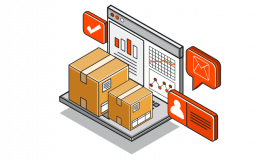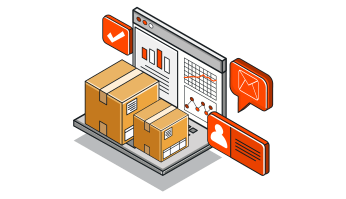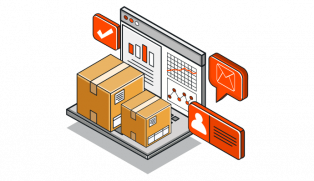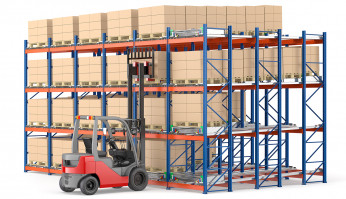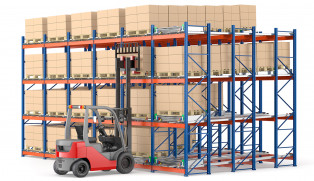WMS systems
- Elimination of human factor
- Automatic inventory count
- Increasing the processing speed of receipts and shipments
- Optimization of logistics processes
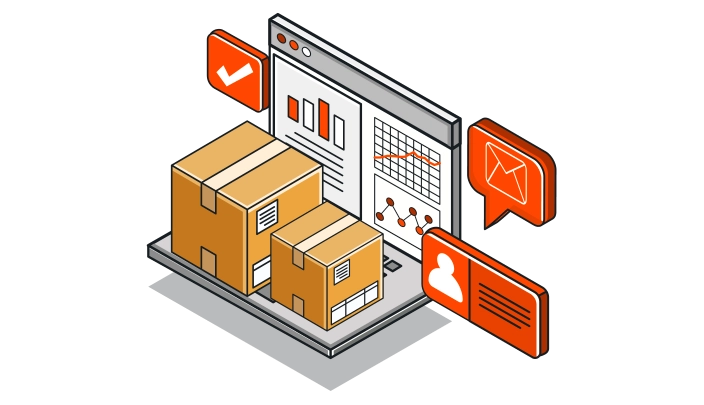
Purpose
WMS (Warehouse Management System) make it possible to optimize the majority of internal work processes in warehouse complexes as much as possible. It is achieved on the one hand by using modern equipment that takes on most of the loading and unloading tasks and on the other hand by using warehouse management software that minimizes human errors.
Suitable for
- Logistics centres and transport terminals of any size
Spheres of activity
-
DIY (construction, repair)
-
Food, beverages
-
Drogerie (cosmetics, household products)
-
HoReCa, catering
-
Clothing, shoes
-
Pharmaceuticals, medicine
-
Transport, communications, logistics, archives
-
Household appliances, electronics
-
Agro-industrial complex, forestry
-
Cars, special-purpose machineries
-
Public utilities
-
Finance, insurance
-
Education, culture, printing industry
-
Sports, tourism, entertainment
Description
A modern warehouse with a high load and turnover rate of goods and materials requires serious automation of internal processes. WMS system enables you to speed up most warehouse operations and automate them. A software shell manages the database containing information about the warehouse remains, their location in the warehouse and so on. Besides, WMS controls the work of peripheral equipment, i.e. scanners, autonomous vehicles, shuttles and lifts.
An introduction of such a system allows you to solve several problems of the warehouse. Firstly, automatic control of the movement of goods and inventory prevents the vast majority of errors made by staff in manual handling of receipts. Secondly, when using optional equipment (e.g. autonomous vehicles and shuttles as well as pallet and box lifts), it becomes possible to perform tasks even outside normal working hours, i.e. at night and on weekends.
Of course, the integration of WMS into warehousing processes requires the installation of additional equipment. An exact configuration depends on what tasks will be performed in the updated warehouse. In any case, the system is versatile enough to suit a wide range of logistics centres, transport terminals as well as warehouses of production and trading companies.
Please contact specialists of Sklad Service to find out about the variants of WMS implementation and receive consultation on the capabilities of warehouse management software. You can do this by calling on the telephone number listed on the website or by using the feedback form. All peripheral equipment and hardware components have the official manufacturer warranty.
Additional files
for your tasks
With 18 years of experience, we have created a list of effective solutions to problems in any area of business.
We will help to create the most effective structure for your tasks.

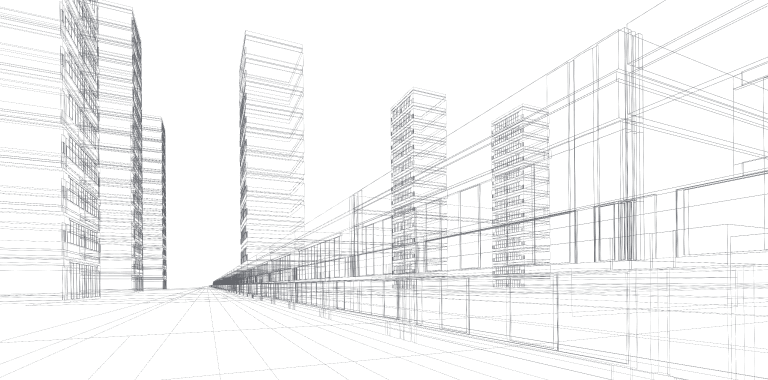
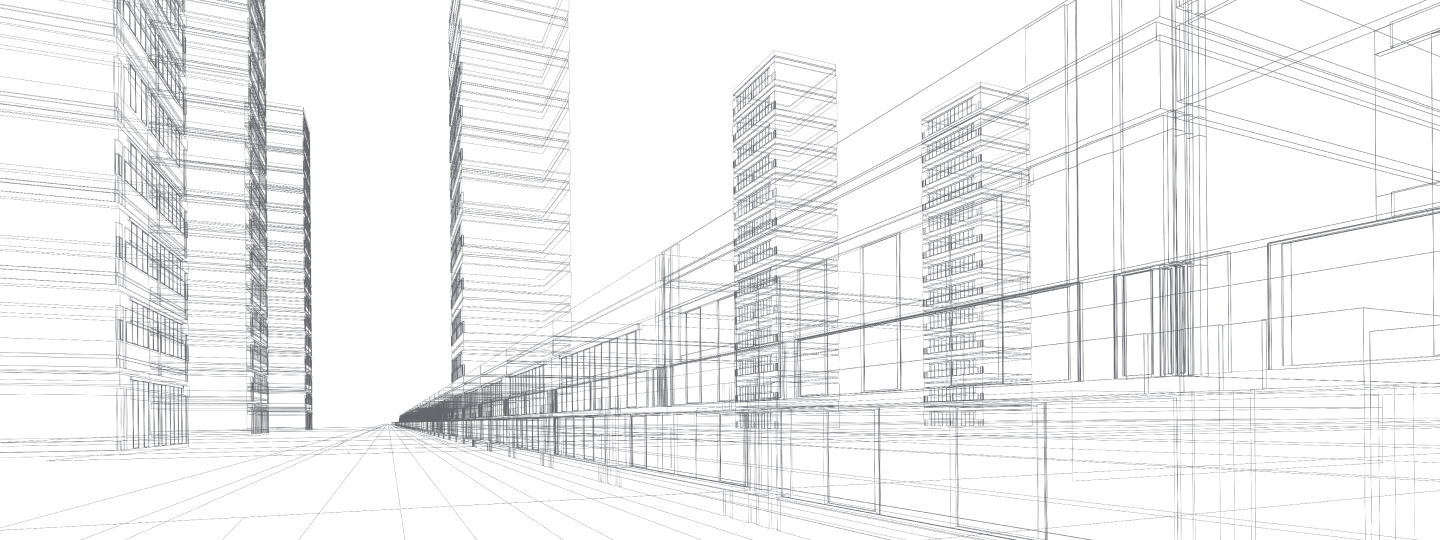
Terms of delivery

The price for implementing a WMS system is calculated on an individual request and depends on the scope of work.
The project budget consists of payment for each stage of the project:
1. Audit and formation of a design project. Comprehensive survey of the customer's facility and business processes. Preparation and approval of a design project. Matching the "as is" and "to be" blocks;
2. Commissioning works. Adaptation of WMS according to the agreed tor (the duration of the stage depends on the customer's requirements). Development of testing scenarios. Comprehensive testing. Customer-based WMS deployment. Loading initial data (balances, constants, service directories);
3. Training. Training of warehouse and administrative staff;
4. Launch. Putting the system into operation at the customer's facility. Post-launch support;
5. Support services. Technical support.

On average, the implementation of a WMS system takes from 2.5 to 4 months. Deadlines depend on many factors, such as the type of warehouse, the type of business, the complexity of processes, the need for integration with conveyors or other equipment, and the speed of customer response.
Approximate terms of each stage of implementation of the WMS system:
1. Analysis and preparation of the design project – 15–30 days
2. Commissioning – 15–40 days
3. Training — 5–10 days
4. Launch – 5–15 days
5. Post-launch support – 7–14 days

Payment terms are defined in the contract, which is agreed by the customer and the executor.
We offer two types of implementation of the WMS system:
1. Purchase of a software license. License repurchase is suitable for large and medium-sized businesses and is paid for in a lump sum.
2. SaaS solutions. The cloud solution (SaaS) is recommended for medium and small businesses, payment is made monthly for the duration of using the system.

Implementation of the WMS system, technical support and customer support is provided by a Ukrainian partner who specializes in developing its own solutions for business automation.




The price for implementing a WMS system is calculated on an individual request and depends on the scope of work.
The project budget consists of payment for each stage of the project:
1. Audit and formation of a design project. Comprehensive survey of the customer's facility and business processes. Preparation and approval of a design project. Matching the "as is" and "to be" blocks;
2. Commissioning works. Adaptation of WMS according to the agreed tor (the duration of the stage depends on the customer's requirements). Development of testing scenarios. Comprehensive testing. Customer-based WMS deployment. Loading initial data (balances, constants, service directories);
3. Training. Training of warehouse and administrative staff;
4. Launch. Putting the system into operation at the customer's facility. Post-launch support;
5. Support services. Technical support.
On average, the implementation of a WMS system takes from 2.5 to 4 months. Deadlines depend on many factors, such as the type of warehouse, the type of business, the complexity of processes, the need for integration with conveyors or other equipment, and the speed of customer response.
Approximate terms of each stage of implementation of the WMS system:
1. Analysis and preparation of the design project – 15–30 days
2. Commissioning – 15–40 days
3. Training — 5–10 days
4. Launch – 5–15 days
5. Post-launch support – 7–14 days
Payment terms are defined in the contract, which is agreed by the customer and the executor.
We offer two types of implementation of the WMS system:
1. Purchase of a software license. License repurchase is suitable for large and medium-sized businesses and is paid for in a lump sum.
2. SaaS solutions. The cloud solution (SaaS) is recommended for medium and small businesses, payment is made monthly for the duration of using the system.
Implementation of the WMS system, technical support and customer support is provided by a Ukrainian partner who specializes in developing its own solutions for business automation.



